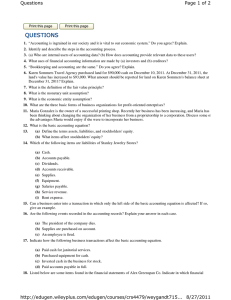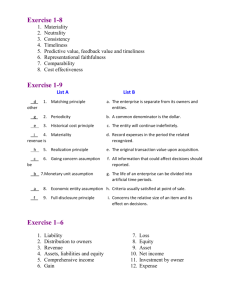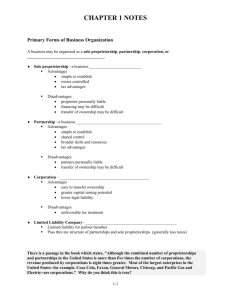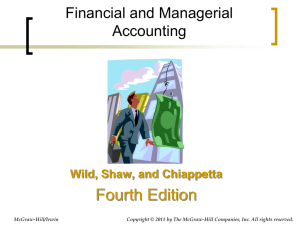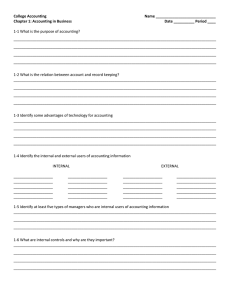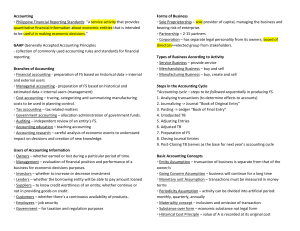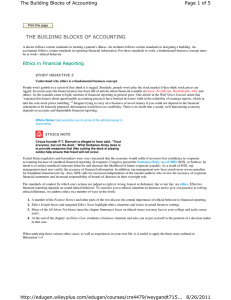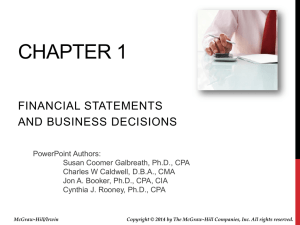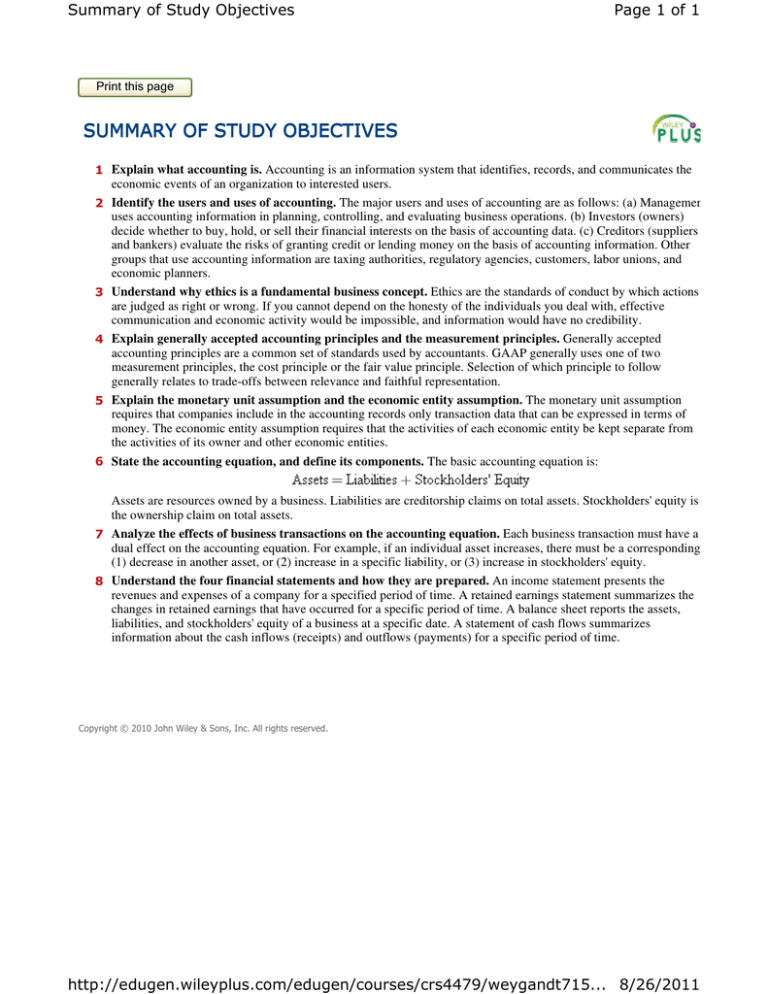
Summary of Study Objectives
Page 1 of 1
Print this page
SUMMARY OF STUDY OBJECTIVES
1 Explain what accounting is. Accounting is an information system that identifies, records, and communicates the
2
3
4
5
6
economic events of an organization to interested users.
Identify the users and uses of accounting. The major users and uses of accounting are as follows: (a) Management
uses accounting information in planning, controlling, and evaluating business operations. (b) Investors (owners)
decide whether to buy, hold, or sell their financial interests on the basis of accounting data. (c) Creditors (suppliers
and bankers) evaluate the risks of granting credit or lending money on the basis of accounting information. Other
groups that use accounting information are taxing authorities, regulatory agencies, customers, labor unions, and
economic planners.
Understand why ethics is a fundamental business concept. Ethics are the standards of conduct by which actions
are judged as right or wrong. If you cannot depend on the honesty of the individuals you deal with, effective
communication and economic activity would be impossible, and information would have no credibility.
Explain generally accepted accounting principles and the measurement principles. Generally accepted
accounting principles are a common set of standards used by accountants. GAAP generally uses one of two
measurement principles, the cost principle or the fair value principle. Selection of which principle to follow
generally relates to trade-offs between relevance and faithful representation.
Explain the monetary unit assumption and the economic entity assumption. The monetary unit assumption
requires that companies include in the accounting records only transaction data that can be expressed in terms of
money. The economic entity assumption requires that the activities of each economic entity be kept separate from
the activities of its owner and other economic entities.
State the accounting equation, and define its components. The basic accounting equation is:
Assets are resources owned by a business. Liabilities are creditorship claims on total assets. Stockholders' equity is
the ownership claim on total assets.
7 Analyze the effects of business transactions on the accounting equation. Each business transaction must have a
dual effect on the accounting equation. For example, if an individual asset increases, there must be a corresponding
(1) decrease in another asset, or (2) increase in a specific liability, or (3) increase in stockholders' equity.
8 Understand the four financial statements and how they are prepared. An income statement presents the
revenues and expenses of a company for a specified period of time. A retained earnings statement summarizes the
changes in retained earnings that have occurred for a specific period of time. A balance sheet reports the assets,
liabilities, and stockholders' equity of a business at a specific date. A statement of cash flows summarizes
information about the cash inflows (receipts) and outflows (payments) for a specific period of time.
Copyright © 2010 John Wiley & Sons, Inc. All rights reserved.
http://edugen.wileyplus.com/edugen/courses/crs4479/weygandt715... 8/26/2011

